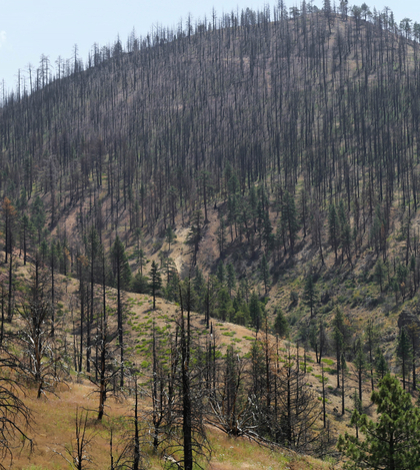The message is loud and clear. Don’t drink or cook with untreated surface waters throughout the Camp Fire burn area and downstream of the burn area!
Targeted sampling of surface waters at various locations throughout the Camp Fire burn area and downstream of the burn area is being conducted by the Central Valley Regional Water Quality Control Board (CVRWQCB), in coordination with Butte County, the California Department of Water Resources and the California Department of Transportation. Whereas earlier sampling found increased concentrations of some metals and polycyclic aromatic hydrocarbons (PAHs), the most recent samples and preliminary laboratory analyses, collected on March 27, found concentrations of aluminum, antimony, arsenic, cadmium, lead, and selenium exceeding Primary Maximum Contaminant Levels (MCLs) at most monitoring stations.
“We are working closely with local, state and federal partners to better understand the impacts to surface water, groundwater, and drinking water resulting from the Camp Fire,” said Clint Snyder, CVRWQCB assistant executive officer.” It is very likely that we will be expanding the surface water monitoring program to include locations further downstream “It’s important that the public not drink or cook with untreated surface water.”
The March 27 sampling was timed to assess pollutant concentrations following a five-day storm event. The timing is noteworthy because sustained rainstorm activity would have triggered erosion issues with charred and possibly contaminated soil being swept into the waterways. It is surface waters — those waters that flow on the ground surface – that are being sampling and the sampling does not include water that comes from wells.
Though the most recent sampling concentrations were higher than previous sample results, PAH concentrations also increased compared to previous sample results but did not exceed Primary MCLs. Primary MCLs are drinking water standards that protect public health. PAHs are a class of chemicals that occur naturally and following fires. Natural carbon is found in substances such as coal, crude oil and gasoline. PAHs are also produced when wood, garbage and other carbon-based substances are burned.
Water samples collected in January and February will required additional data to determine if the concentrations are representative of post-fire surface water quality in the burn area. Comparative data from subsequent sampling will provide more information about the status of the water in the Camp Fire burn areas, and possibly further downstream, in the coming weeks. The cooperative agencies will continue to monitor surface waters and updates for the public regarding these results will be made public as soon as they become available.
For individuals with shallow wells along Butte Creek and Little Butte Creek, it is being suggested that they review their well construction details and consider testing their well water if they have not already done so. More information on this is available at: www.ButteCountyRecovers.org and downloading the Private Well Safety and Testing guidance information or by calling the Butte County Environmental Health Division at 530-552-3880.
General questions or needed information can be obtained by contacting local water purveyor or by calling the State Water Board’s Division of Drinking Water at 530-224-4800.
 California Water News Daily Your Source For Water News in California
California Water News Daily Your Source For Water News in California


